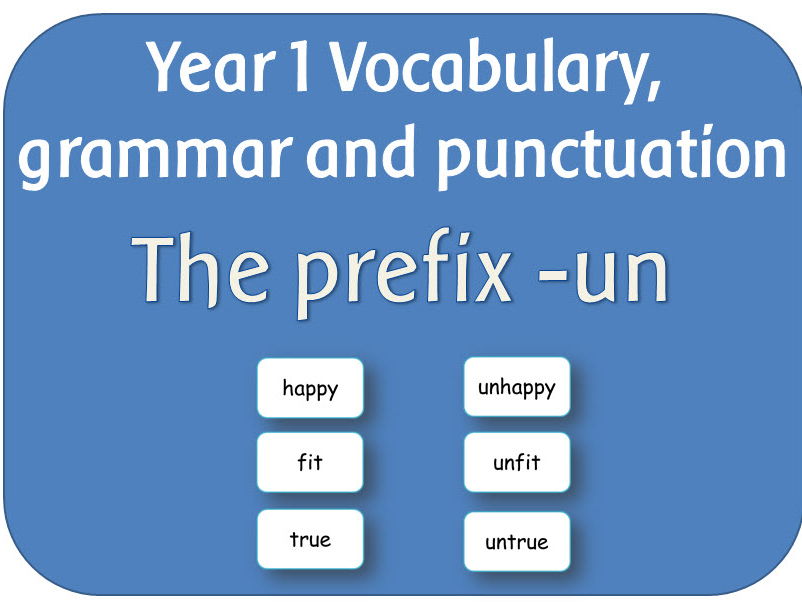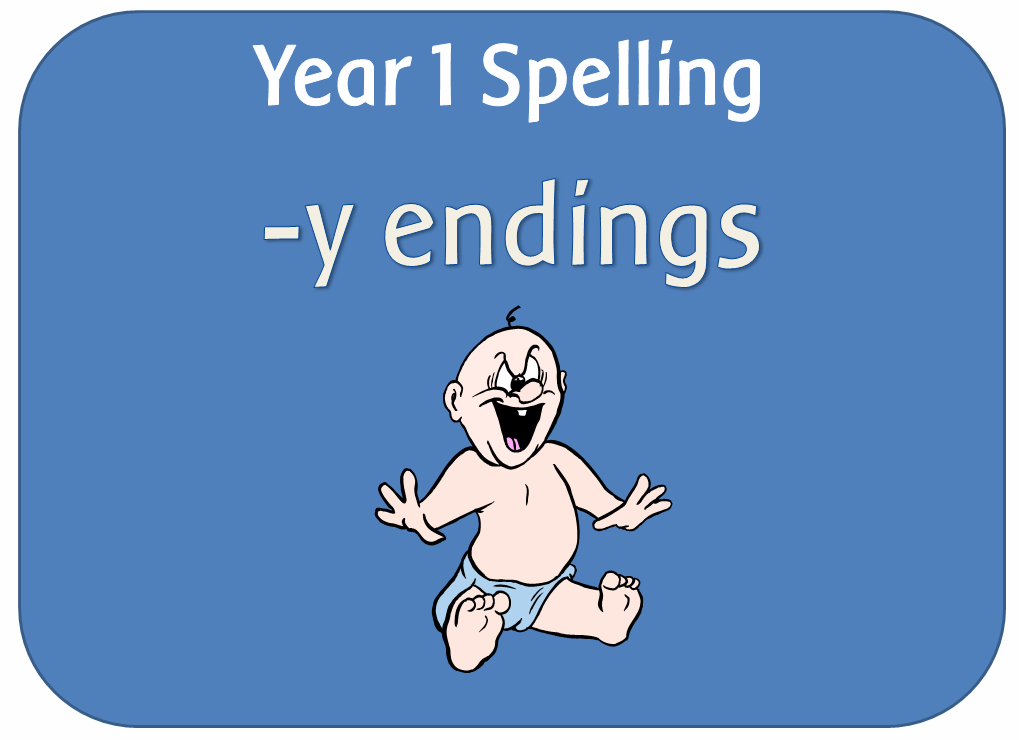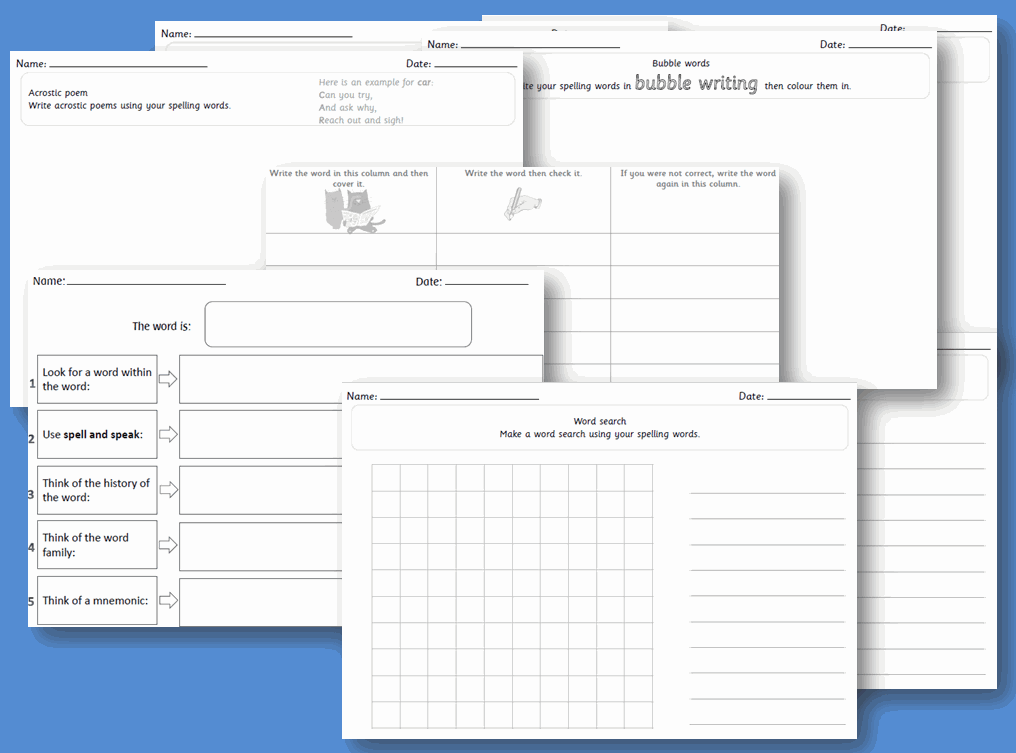
404Uploads
1072k+Views
683k+Downloads
English

SPaG Year 2 Spelling: The /aɪ/ sound spelt –y at the end of words
A powerpoint lesson, word list, planninag and activities to teach the /aɪ/ sound spelt –y at the end of words

SPaG Year 2 Spelling: The /l/ or /əl/ sound spelt –le, -el, -al and -il at the end of words
Resources to teach the spelling rule: The /l/ or /əl/ sound spelt le, el, al and il at the end of words
WORDS ENDING IN LE:
POWERPOINT
Le at the end of words: A short powerpoint with 18 common words to read ending in le.
ACTIVITIES
Cards containing words ending in le - 45 word cards to play games
Wordsearch - le words
WORDS ENDING IN EL:
POWERPOINT
El at the end of words: A short powerpoint explaining that this spelling is not as common as le, but is usually found after m, n, r, v, w, and s. It displays 12 common words to read ending in el.
ACTIVITIES
Cards containing words ending in le - 27 word cards to play games
Wordsearch - el words
WORDS ENDING IN AL:
POWERPOINT
Al at the end of words: A short powerpoint explaining that not many nouns end in al, but many adjectives do. It displays 16 common words to read ending in al.
ACTIVITES
Cards containing words ending in al - 27 word cards to play games
Wordsearch - el words
WORDS ENDING IN IL:
POWERPOINT
IL at the end of words: A short powerpoint explaining that not many words end in il. It displays 9common words to read ending in il.
ACTIVITES
Cards containing words ending in al - 27 word cards to play games
Wordsearch - el words
ALL SPELLINGS OF THE /L/ SOUND
POWERPOINT
Which 'l' sound to use - shows all four spellings, with 22 words for the children to find which spelling is correct. It points out that the most common spelling is le.
ACTIVITIES
Loop cards containing pictures and all 4 spellings of the /l/ sound.
Although every effort has been made to check wordsearches for unintentional inappropriate words, it is recommended that teachers double check them before giving to children.
TEACHER RESOURCES
Word list
Planning - An adaptable outline plan of the resources included and objectives

SPaG Year 2 Spelling: The /r/ sound spelt wr
A set of resources looking at words beginning with wr.
POWERPOINT: Explains the spelling and gives examples for the children to read. Then there is a spelling activity, using a look, hide and check format
BINGO: Wr words
CARDS: Matching cards with words and pictures
CROSSWORD: wr words
PRACTICE SHEET: Writing words beginning with wr spelling sheet
WORDSEARCH: wr words
WORD DOCUMENTS: Lists of words and a planning document.

SPaG Year 2 Spelling: the /n/ sound spelt kn and gn
A set of resources looking at the /n/ sound spelt kn and gn at the beginning of words.
POWERPOINT: Explains the spelling and gives a short explanation of why these types of word exist, then gives examples for the children to read. Then there is a spelling activity, using a look, hide and check format
BINGO: Two sets, kn words and kn and gn words
CARDS: Matching cards with words and pictures
WORDSEARCH: kn words
WORD DOCUMENTS: Lists of words and a planning document.

SPaG Year 2 Spelling: the/s/ sound spelt c before e i and y
A set of resources to teach the spelling rule: The /s/ sound spelt c before e, i and y:
THE 'S' SOUND CE
POWERPOINT - Explains the spelling and states the rule, and gives examples for the children to read. Then there is a spelling activity, using a look, hide, check activity
WORKSHEET - to practise spelling ce words and use them in a sentence
CARDS - Matching cards with words and pictures
THE 'S' SOUND CI
POWERPOINT - Explains the spelling and states the rule, and gives examples for the children to read. Then there is a spelling activity, using a look, hide, check activity
WORKSHEET - to practise spelling ci words and use them in a sentence
CARDS - Matching cards with words and pictures
THE 'S' SOUND CY
POWERPOINT - Explains the spelling and states the rule, and gives examples for the children to read. Then there is a spelling activity, using a look, hide, check activity
WORKSHEET - to practise spelling cy words and use them in a sentence
CARDS - Matching cards with words and pictures
WORD DOCUMENTS
PLANNING - Y2 Spelling Appendix: The 's' sound planning
WORD LIST - Lists of ce ci and cy words

SPaG Year 2 Spelling: ge and dge at the end of words
A set of resources to teach the spelling rule: The /dʒ/ sound spelt as ge and dge at the end of words and sometimes spelt as g elsewhere in words before e, i and y

SPaG Year 1 Terminology powerpoint
Explanations of the terminology letter, capital letter, words, singular, plural, sentence, punctuation, full stop, question mark and exclamation mark.

SPaG Year 1 Punctuation: Capital letters, full stops, question marks & exclamation marks
Spelling resources to teach the statutory requirements in Appendix 2 of the English curriculum:
Punctuation: Separation of words with spaces; Introduction to capital letters, full stops, question marks and exclamation marks to demarcate sentences; Capital letters for names and for the personal pronoun I.
PowerPoint files:
Introduction to exclamation marks: Short presentation explaining when to use exclamation marks
Introduction to full stops: Short presentation explaining when to use full stops
Introduction to question marks: Short presentation explaining when to use question marks
Capital letters - when to use them: Looks at occasions where capital letters should be used, with an activity to test the children’s understanding at the end.
Capitals and punctuation quiz: Interactive activity where the children have to decide what is wrong with each sentence.
Jake’s full stop: A story that shows what happens when full stops are left out of sentences.
Sentences and punctuation: Recap on sentences and punctuation, with an activity at the end.

Introduction to reading and writing sentences Y1 Year 1
These resources introduce the concept of a sentence and show how to write a sentence.
POWERPOINTS:
Introduction to sentences: Explains what sentences and punctuation are. It reinforces the importance of capital letters, full stops, question marks or exclamation marks, and spaces in-between words.
How to compose a sentence: Introduces the concept of sentence writing, and how the children should think about and then say the sentence before they write it down, remembering to read through and check their work when finished.
“I can” sentences: simple sentences for the children to read. The vocabulary gets progressively harder, from simple CVC words to using long vowel graphemes and blends.
Jake’s Full Stop: A story demonstrating how important it is to put full stops in the right places.
Picture sentences: Find the correct sentence out of four to match the picture.
Joining sentences with ‘and’: Demonstrates how text can become more interesting when ‘and’ is used to join sentences. Ends with sentences for the children to join with the word and.
Words that fit: Find the words that can be substituted in the sentence.
Sentence building: Jumbled up words that need arranging into sentences. Suitable for a class writing activity.
WORKSHEETS (PDF) - to accompany the PowerPoints
Worksheets: 15 different worksheets to accompany the lessons, including -
A checklist when writing sentences
Finish the ‘I can’ sentences
Write the words that fit
Write sentences about a picture
Punctuation story
Match the sentences
Cut and make a sentence
The worksheets are in both colour and black and white.
Some of the PowerPoints include a linked video to watch. This is a link shared through SafeShare T.V., a program that filters adverts and unwanted commercials from the clip. You may need to check if you can access this in school.
The links were checked before uploading, but if any don’t work, feel free to contact me.

SPaG Year 1: The prefix un
2 powerpoint lessons - how the prefix un- changes the meaning of verbs and adjectives; plus jigsaw cards and a lesson plan.
Adding the prefix un to adjectives: Powerpoint explaining how the meaning of adjectives change when un- is added, ending with an activity
Adding the prefix un to verbs: Powerpoint explaining how the meaning of verbs changewhen un- is added, ending with an activity
Activity cards
Jigsaw cards - root words and the prefix un.

SPaG Year 1 Grammar: Suffixes
3 powerpoint lessons looking at suffixes that can be added to verbs without any change in spelling of the root word, plus a jigsaw activity and plan.
This set contains the following PowerPoints:
The suffix ed: Explains what a suffix is, and what meaning the suffix ed adds to verbs, giving examples and an activity
The suffix er: Explains what a suffix is, and what meaning the suffix er adds to nouns, giving examples and an activity
The suffix ing: Explains what a suffix is, and what meaning the suffix ing adds to verbs, giving examples and an activity
Activity cards (pdf)
Jigsaw cards - root words and suffixes er ing ed

SPaG Year 1 : Plural noun suffixes powerpoint and worksheet
A powerpoint lesson, worksheet and plan on plural noun suffixes:
Plural noun suffixes: A powerpoint explaining the meaning of singular, plural and what a suffix is. It explains what effect the addition of s or es has on nouns.It ends with an interactive game.
Plural noun suffix worksheet

SPaG Year 1 Spelling pack: Revision of work covered in Reception powerpoints and activities
A set of resources to recap work covered in Reception:
POWERPOINTS: Each PowerPoint lesson contains decodable high frequency words the children will be familiar with. The children are asked to read and then write the words.
• SET 1 Two letter words
• SET 2 CVC words 1
• SET 3 CVC words 2
• SET 4 CVC words 3
• SET 5 Consonant digraph words
• SET 6 Adjacent consonants
• SET 7 Adjacent consonants 2
• Words with adjacent consonants: An organised list of words containing adjacent consonants for extra reading practice.
GAMES / ACTIVITIES:
• Word cards (x7): There is a set of cards for each set of words.
• Sets 1-7 HFW lists: Can be used for spelling lists for the children.

SPaG Year 1 Spelling pack: Common Exception Words powerpoints, worksheets and activities
A set of resources to teach the Y1 CEW.
The more difficult spellings are covered in individual PowerPoints and give the children different strategies to learn the words.
The other spellings are organised into sets (eg is his has us was all have the /z/ sound at the end)
PDF
The worksheets contain different activities to encourage children to use the CEW in their writing.

SPaG Year 1 Spelling pack: Compound words powerpoints and activities
A set of resources to teach the guideline/rule in the Spelling Appendix:
Compound words are two words joined together. Each part of the longer word is spelt as it would be if it were on its own.
POWERPOINTS:
Introduction to writing compound words: Activity for the children to write and check compound words.
Making up compound words: Gives a list of words from which compound words can be made.
Words containing box: Examples of words with opportunities to write them.
Words containing every: Examples of words with opportunities to write them.
Words containing play: Examples of words with opportunities to write them.
Words containing up: Examples of words with opportunities to write them.
PDF:
Cards to match up to make compound words.
Compound word worksheet: List of individual words for children to select and make new compound words.
Compound word worksheet blank
Compound word matching game
Plus a compound word list

SPaG Year 1 Spelling pack: Adding the prefix un
A set of resources to teach the guideline/rule in the Spelling Appendix:
The prefix un– is added to the beginning of a word without any change to the spelling of the root word.
POWERPOINT:
The prefix un: Shows how un can be added to words without any changes in spelling, and explains how adding un can change the meaning of words. It ends with an activity with words to add the prefix un to.
PDF:
Jigsaw cards - un prefix/words: A set of jigsaw cards to join the prefix un to root words.
Word cards - words plus un: Sets of words with and without the prefix un.

SPaG Year 1 Spelling pack: Using k for the /k/ sound
Resources to teach the guideline/rule in the Spelling Appendix:
The /k/ sound is spelt as k rather than as c before e, i and y.
POWERPOINT:
Explains the spelling rule and gives examples of words for a class activity where the children can try to spell the words.
PDF:
Wordsearch with relevant words

SPaG Year 1 Spelling pack: New consonant spellings ph and wh
A set of resources to teach the guideline/rule in the Spelling Appendix:
The /f/ sound is not usually spelt as ph in short everyday words (e.g. fat, fill, fun).
POWERPOINTS:
Each lesson explains the spelling rule, and gives examples of words for a class activity where the children can try to spell the words.
PDF:
Wordsearches with relevant words
WORD:
Outline adaptable planning document

SPaG Year 1 Spelling pack: Words ending in y
A set of resources to teach the guideline/rule in the Spelling Appendix:
When a word ends in an /i:/(‘ee’) or /ɪ/ (‘i’) sound, it can be spelt –y.
POWERPOINT: Explains the spelling rule and gives examples of words for a class activity where the children can try to spell the words.

SPaG Spelling pack: Activities to practise spelling words
A set of pdf files that can be used for spelling activities.




















